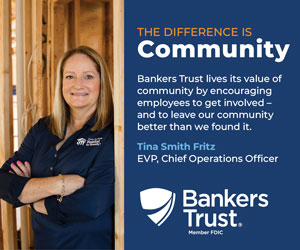Laying the Foundation for Data

Business Record Staff May 10, 2017 | 6:00 am
3 min read time
810 wordsBusiness Insights Blog, The Internet of ThingsBY DENNY FISHER, Chief strategist, ACS
A study by Price Waterhouse Cooper (PWC) and Iron Mountain in 2015 revealed only 4% of companies were classified as “data elite” or able to effectively manage and leverage their data. With more devices than ever connected to each other and producing volumes of data, it’s important that businesses and others understand how to best gather and source their information so it is usable and can help the business meet its goals and objectives.
The first steps toward joining the “data elite” are to source, verify and cleanse all data. Determine the stakeholders who are involved and where the data is coming from, so you can determine how to mine the data, make sure the information is accurate and use the data in the most effective way. The best way to do this is to have an upfront conversation to learn what your company wants from its data before beginning.
“Data has no meaning without a purpose, goal and context. To determine what data should be collected you first have to define what decisions do I want to make using the data,” says Eric Hoefing, Application Development Manager for ACS.
Sourcing the Data
Data will come from a plethora of sources. For example, an agriculture technology or manufacturing company, may retrieve data from pieces of machinery that may or may not be connected to the company’s network. Through the “Internet of Things” these devices, along with any other devices or applications that are connected to the network or embedded with network connectivity or software sensors, can send and retrieve data. All of these data points can be harvested for use, so there needs to be a conversation with involved stakeholders about which data is the most important for business development.
Data Cleansing and Verification
Verify Data Relevancy
Once data is gathered from a reliable source, the next step is to verify the accuracy. This can become a challenge in situations where there may be 10 or more locations from which data is gathered. There also might be situations where an office program has been updated or business leaders are using different databases. Those programs or databases might not be up to date or contain the most accurate information. The information also needs to match across departments. For example, all customer numbers and names will need to be accurate to ensure that the company’s accounting department and sales department are using the same data when assisting customers.
| Accounting Database | |
| Customer Name | Disney Corporation |
| Contact Name | Mickey Mouse |
| Phone | 1 (800) 457-2958 |
| Sales Database | |
| Customer Name | Disney Corporation |
| Contact First Name | Mickey |
| Contact Last Name | Mouse |
| Phone | 1 (800) 457-2958 |
The information will also need to be stored in the same format or a backend process must be employed to match and translate the data between the disparate systems.
| Accounting Database | |
| Customer Name | Disney Corporation |
| Contact Name | Mickey Mouse |
| Phone | 1 (800) 457-2958 |
| Sales Database | |
| Customer Name | Disney Corporation |
| Contact Name | Mickey Mouse |
| Phone | 1 (800) 457-2958 |
All data needs to be pooled into a central location for storage, where it can be verified and then evaluated for use. The end goal is to centralize the data, analyze it and store it in a way, that is as simple as possible to access and utilize, whether one database or multiple databases
Cleansing the Data
After the data has been gathered and stored, the information will need to go through a cleansing process.
“Communication with data sources and stakeholders is critical to this process and to ensure the data is correctly interpreted. This is where a client’s business plan and processes will often help demonstrate how they will use the data and what they want to learn from it,” Hoefing says.
For example, a company’s sales division may want its sales broken down county by county vs. by city and state alone. If the team responsible for data management isn’t aware of the sales division’s requirements, then the data may not be sourced to include this information, and the business would be left without the data required to successfully makes decisions and fulfill its goals.
The data also will need to be cleansed to ensure numbers and other information are accurate.
“Going through the data creates a good foundation from which to make good insights and good decisions,” Hoefing says. “If the data isn’t accurate, trustworthy, easily accessible and match the organization’s goals, they’re going to make a lot of uninformed decisions that could lead to unintended results.”
There are platforms to help streamline the cleansing and verification process. In our next blog, we’ll discuss what features to look for in a data analytics or business intelligence tool, and how those tools can be used to enhance the data management process and allow business leaders to make better decisions.
 |
Denny Fisher, Chief Strategist View Bio 515-223-0078 contact@acsltd.com acsltd.com/br |











